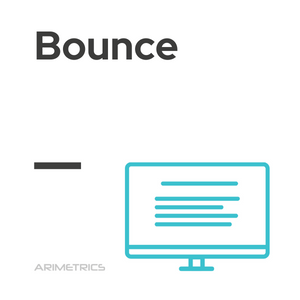 Definition:
Definition:
The term bounce is applied in both web analytics and email marketing, and refers to the lack of expected user interaction. In the context of a website, a bounce occurs when a visitor accesses a page and leaves without exploring other sections of the site. In email marketing, a bounce occurs when an email cannot be delivered to the recipient. In both cases, a bounce indicates a missed opportunity to capture the user’s attention and can negatively affect interaction and conversion goals.
Bounce in the sending of emails
In email marketing when an email bounces, it usually means that it cannot be delivered to the mailbox. There are two forms of rebound in this regard:
- Hard bounce: refers to a durable bounce. It is an email that cannot be delivered by permanent forms. This may be because the email address is fake, the domain does not exist, or the mail server does not agree to receive any more emails. This means a long-lasting and stable failure, so those addresses must be removed from the mailing list.
- Soft bounce: this occurs when an email cannot be delivered due to temporary causes. For example, a mailbox that is full or that the file you own is very large. If this type of bounce occurs, many mail providers will try to forward it over the course of a few days. You have to monitor those addresses, if that problem persists in them several times, it is better to eliminate them.
Bounce on the web
In the context of web analytics, bounce rate is a fundamental metric that helps to understand user behavior on a website. A high bounce rate can indicate problems such as irrelevant content, unattractive design or technical issues that prevent a good user experience. By analyzing this metric, website owners can identify areas of improvement to increase visitor retention and encourage interaction with more site content.
Strategies to reduce bounce
These strategies help improve user retention on websites and ensure effective email delivery, thus optimizing the overall performance of your digital efforts:
How to reduce bounce rate on the web
- Content optimization: Ensure that the content of each page is relevant and attractive to visitors. Use clear headlines and effective calls to action to grab the user’s attention from the start.
- Improve design and navigation: Design a website that is intuitive and easy to navigate. Ensure that the site is responsive and looks good on all devices. Minimize load times to prevent users from getting frustrated and abandoning the site.
How to reduce bounces in sent emails
- Regular cleaning of mailing lists: Remove invalid or inactive mailing addresses to reduce hard bounces. Use email verification tools to keep lists up to date.
- Segmentation and personalization: Send relevant and personalized emails to specific segments of the target audience. Ensure that content is engaging and useful to recipients, which can improve open rates and reduce soft bounces.
